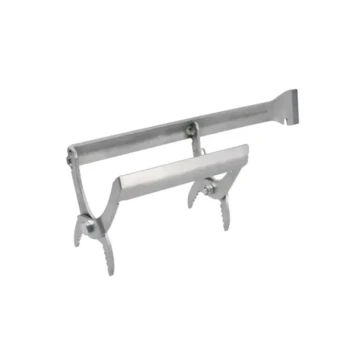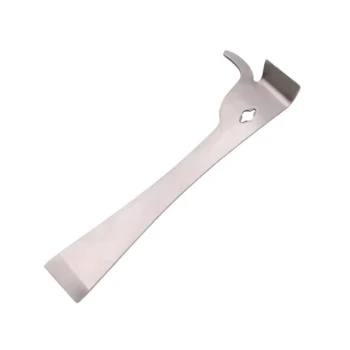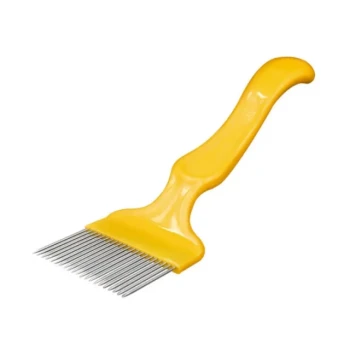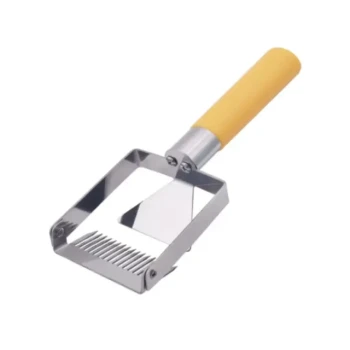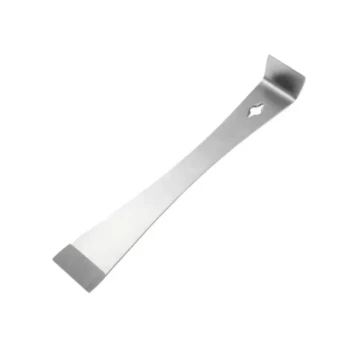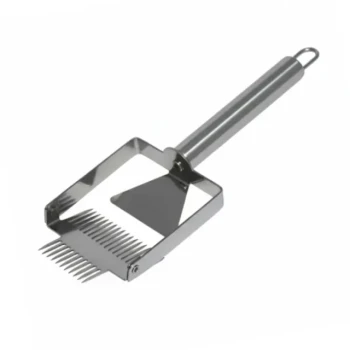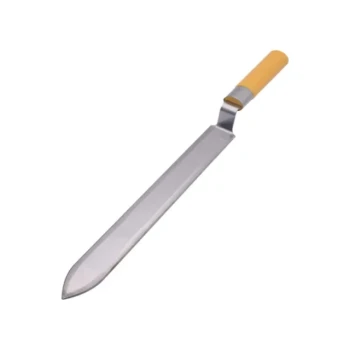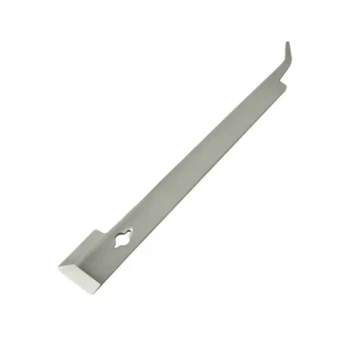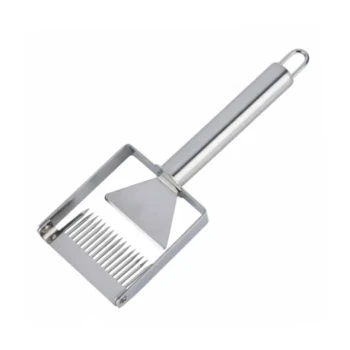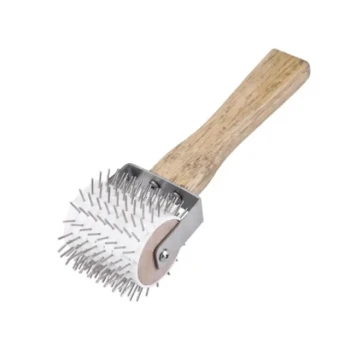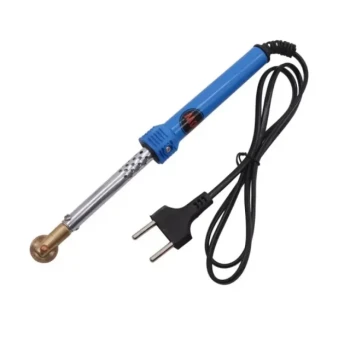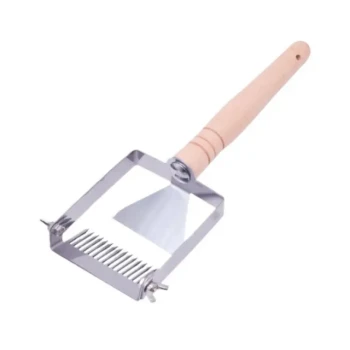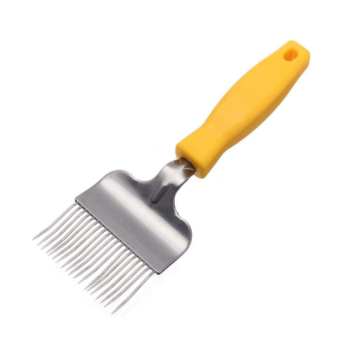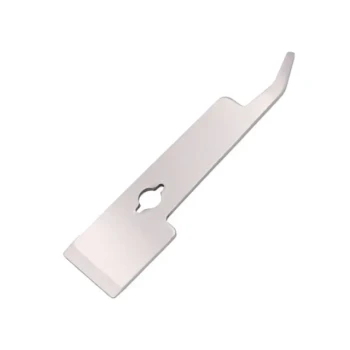At its core, a queen cage is a tool for social integration. It is a small, specialized container designed to safely introduce a new queen bee into a colony. The cage acts as a protective barrier, preventing the hive's worker bees from immediately attacking the new queen while allowing them to gradually acclimate to her unique scent, or pheromones, over several days.
The fundamental challenge of requeening a hive is overcoming the colony's powerful instinct to reject outsiders. A queen cage solves this by creating a controlled "get to know you" period, where the queen's unique pheromones can permeate the hive and signal her as the new leader before she is physically released.
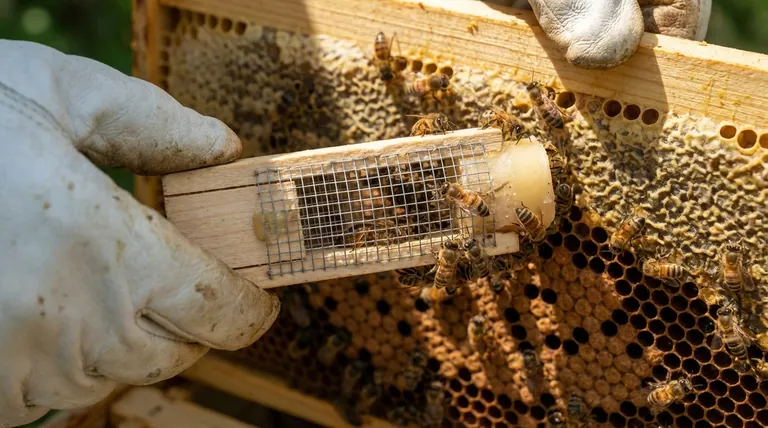
Why a Controlled Introduction is Non-Negotiable
To understand the queen cage, you must first understand the social structure of a honey bee colony. The hive operates as a single superorganism, and its identity is chemically defined by the queen.
The Power of Queen Pheromones
The queen bee constantly secretes a unique chemical blend known as the Queen Mandibular Pheromone (QMP). This scent is the social glue of the hive, signaling her presence, suppressing worker bee reproduction, and maintaining colony cohesion.
A new queen has a foreign scent. To the worker bees, this unfamiliar pheromone profile signals an intruder, triggering a powerful defensive response.
The Colony's Defensive Instinct
When worker bees encounter an unrecognized queen, they will immediately attack her in a process called "balling." Dozens or hundreds of bees will surround the queen in a tight ball, vibrating their flight muscles to generate intense heat, effectively cooking her to death.
The queen cage physically prevents this fatal first encounter, buying the new queen the critical time she needs for her scent to become familiar.
The Gradual Acceptance Process
Most queen cages are designed with a small exit hole that is plugged with a sugar candy. The cage is placed between frames inside the hive.
The worker bees on both sides of the cage wall can interact with the queen through the mesh, smelling her and feeding her. Over a period of 2-4 days, the hive's bees will eat through the candy plug.
By the time the candy is gone and the queen can walk free, her pheromones have spread throughout the hive. The colony has accepted her scent and now recognizes her as their new monarch, dramatically increasing the odds of a successful introduction.
The Queen Cage's Other Critical Functions
While introduction is its primary purpose, the queen cage serves several other vital roles in modern beekeeping.
Safe Transportation
Queen cages are essential for shipping queens from breeders to beekeepers. The cage protects the queen during transit and typically includes a few attendant worker bees and a food source (the sugar candy) to care for her on the journey. This is how bees are delivered in packages and nucleus colonies.
Hive Management and Inspection
A beekeeper might need to temporarily isolate a queen during a hive inspection. This prevents her from being accidentally crushed or injured while the beekeeper is manipulating frames. It also keeps her in a known location, which is useful for tasks like assessing her health or egg-laying pattern.
Improving Hive Genetics
The ability to safely introduce new queens gives beekeepers direct control over their colonies' genetics. A beekeeper can replace an underperforming or aggressive queen with one bred for desirable traits, such as gentleness, disease resistance, or high honey production.
Understanding the Tools and Pitfalls
Using a queen cage correctly is crucial, as mistakes can lead to the loss of a valuable queen and set a colony back weeks or months.
Common Types of Cages
The two most common styles are the three-hole wooden cage (Benton cage) and the modern J.Z. B.Z. plastic cage. Both serve the same function: they hold the queen securely, provide ventilation, and incorporate a candy plug for a slow release.
Distinguishing a Cage from a Catcher
It is important not to confuse an introduction cage with a queen catcher or clip. A catcher is a one-handed, spring-loaded plastic tool used for safely picking up a queen for a brief period, such as during marking or a quick transfer. It is not suitable for a multi-day introduction.
The Risk of Rejection
Using a queen cage does not guarantee 100% acceptance. A colony will almost certainly reject a new queen if they are not truly "queenless." If the old queen is still present, or if the workers have already started raising a new queen of their own in a "queen cell," the introduction will likely fail.
Making the Right Choice for Your Goal
The way you use queen-related tools depends entirely on your specific objective for the hive.
- If your primary focus is starting a new package or nucleus hive: Your goal is to ensure the colony accepts its foundational queen, so follow the slow-release method precisely and disturb the hive as little as possible.
- If your primary focus is requeening an established hive: Your most critical step is to first confirm the colony is queenless and has no existing queen cells before introducing the caged new queen.
- If your primary focus is inspecting or marking a queen: Use a dedicated queen catcher or clip for temporary, safe handling, not an introduction cage.
Understanding the queen cage transforms it from a simple box into a powerful instrument for managing the complex social dynamics of a honey bee colony.
Summary Table:
| Purpose | Key Function | Benefit to Beekeeper |
|---|---|---|
| Queen Introduction | Protects the new queen, allowing her pheromones to spread. | Dramatically increases the success rate of requeening. |
| Safe Transportation | Houses the queen securely with food and attendants during shipping. | Enables the safe delivery of package bees and nucs. |
| Hive Management | Allows temporary isolation of the queen during inspections. | Prevents injury to the queen and simplifies hive work. |
| Genetic Improvement | Facilitates the introduction of queens with superior traits. | Enables control over hive health, productivity, and temperament. |
Ready to elevate your beekeeping operation with reliable, high-quality equipment?
HONESTBEE supplies commercial apiaries and beekeeping equipment distributors with the durable tools needed for success, including essential queen cages. Our wholesale-focused operations ensure you get the best value for your investment.
Contact our team today to discuss your wholesale needs and discover how HONESTBEE can support your thriving apiary.
Visual Guide
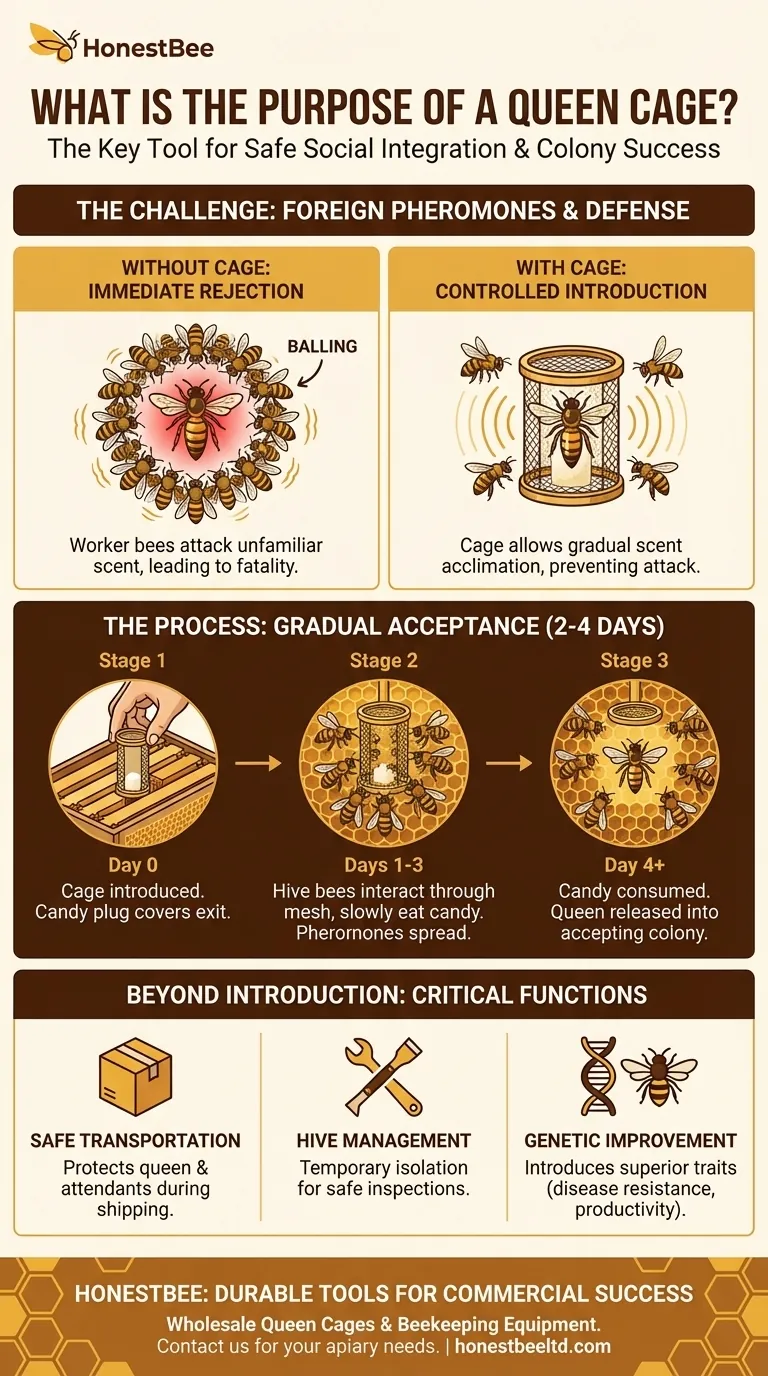
Related Products
- Double Head Beekeeping Grafting Tools for Beekeepers
- Queen Bee Marking Tube Cage Bottle Catcher Holder with Clear Plastic Plunger Marker
- Plastic Queen Bee Catcher Marker Tube Holder for Queen Marking Bottle
- Professional Dual-End Stainless Steel Hive Tool for Beekeeping
- Multi-Function Plier-Style Frame Grip Hive Tool
People Also Ask
- What tools are used to transfer larvae into queen cell cups? A Guide to Grafting Tools for Queen Rearing
- What should be done after grafting is completed? A Step-by-Step Guide to Protect Your Queen Cells
- What is the grafting method for raising queen bees? Master Genetic Control for Your Apiary
- What tools are commonly used for grafting? Master Queen Rearing with the Right Tool
- Why is controlled mating important in honey bee breeding? Master Genetic Selection for Superior Bees




